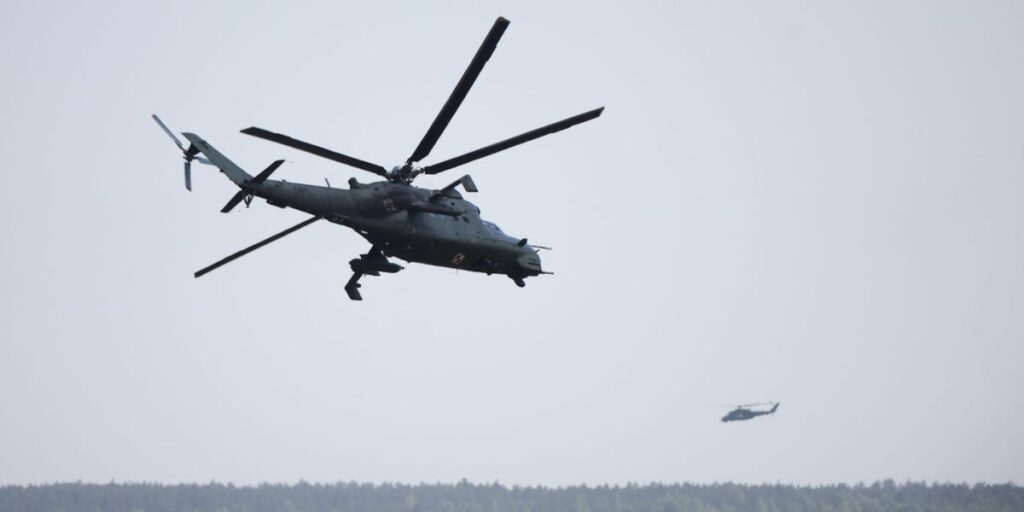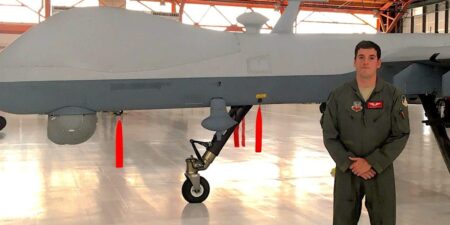Warsaw said on Wednesday that a Russian drone crashed and exploded in a field in eastern Poland, and that the uncrewed system was only discovered the morning after air defenses were activated.
No one was injured, but Poland’s defense minister, Władysław Kosiniak-Kamysz, called the incident a provocation against NATO.
“Russia is once again provoking NATO countries following drone incidents that have taken place in Romania, Lithuania, Latvia,” he said, accusing the Kremlin of 10 total airspace violations since 2022.
In a press conference, officials said the drone likely entered Polish airspace on Tuesday night or Wednesday morning.
Gen. Dariusz Malinowski, deputy commander of Poland’s Armed Forces Operational Command, said air defenses were put on alert that evening during one of Russia’s nightly drone and missile waves against Ukraine.
Warsaw regularly activates its air defenses along its border as a precaution during such attacks, especially after a stray Ukrainian defensive missile killed two Polish citizens in November 2022.
Malinowski said Polish air defenses were alerted at 10 p.m. on Tuesday night, alongside “standard measures designed to seal our border.”
“The entire target detection system was activated. In addition, the forces and means for countering missiles were put on combat readiness, and a Mi-24 helicopter was also raised, which patrolled the eastern part, the Ukrainian part of our border,” he told reporters.
By midnight, the Polish military stood down because it had not detected any abnormalities or threats, Malinowski said.
“Nothing had happened that would show us that something was out of the ordinary,” he said.
But authorities found out in the morning that a drone had exploded in a cornfield in Osiny, a village nearly 70 miles from Poland’s border with Ukraine and roughly 400 miles from mainland Russia.
“This morning, after sunrise, we received information, as has already been said here, about an object that exploded very close to Łuków,” Malinowski said.
A stealthy decoy drone with Chinese parts
The general said that preliminary investigations indicated the drone was “flying very low” to avoid radar detection.
“In our assessment, this drone is designed to be very difficult to detect, and that is indeed the case,” he said.
However, Malinowski also said that it’s still unclear if the drone was flown deliberately into Poland. Neither is it immediately clear exactly when the drone entered Polish airspace.
Authorities did not confirm the drone’s flight path. A drone launched from mainland Russia would have to pass through either Belarus or Ukraine to enter Polish airspace.
Kaliningrad, a militarized Russian exclave, sits directly on Poland’s northern border, though it’s unclear if investigators think the drone launch may have originated from the region.
Malinowski added that while search teams were still collecting the drone’s remains, initial evidence pointed to it being equipped with a Chinese engine and a “self-destructive warhead.”
That could mean the drone was a decoy. Russia commonly deploys the Shahed, a long-range attack drone designed by Iran. One of its locally produced versions, called the Gerbera, is designed to mimic the loitering munition’s signature and appearance while carrying a much weaker warhead.
Reuters cited a Polish defense ministry spokesperson saying that the crashed drone was a Russian version of the Shahed.
Ukrainian forces have long said that they often find Chinese parts within destroyed Russian-produced Shahed drones. European officials also say some Russian and Chinese companies are actively collaborating on the Shahed, helping the Kremlin’s forces to vastly improve the loitering munition’s attack capabilities.
The drone crash comes amid already tense negotiations that the US is trying to broker this month between Russia, Ukraine, and Europe.
Radosław Sikorski, Poland’s foreign minister, said in a statement on Wednesday that his country would “protest against the perpetrator.”
“Another violation of our airspace from the East confirms that Poland’s most important mission vis-à-vis NATO is to defend our own territory,” Sikorski wrote.
The Russian embassy in Warsaw, the Russian defense ministry, and the Russian foreign ministry did not respond to comment requests sent outside regular business hours by Business Insider.
Read the full article here
















